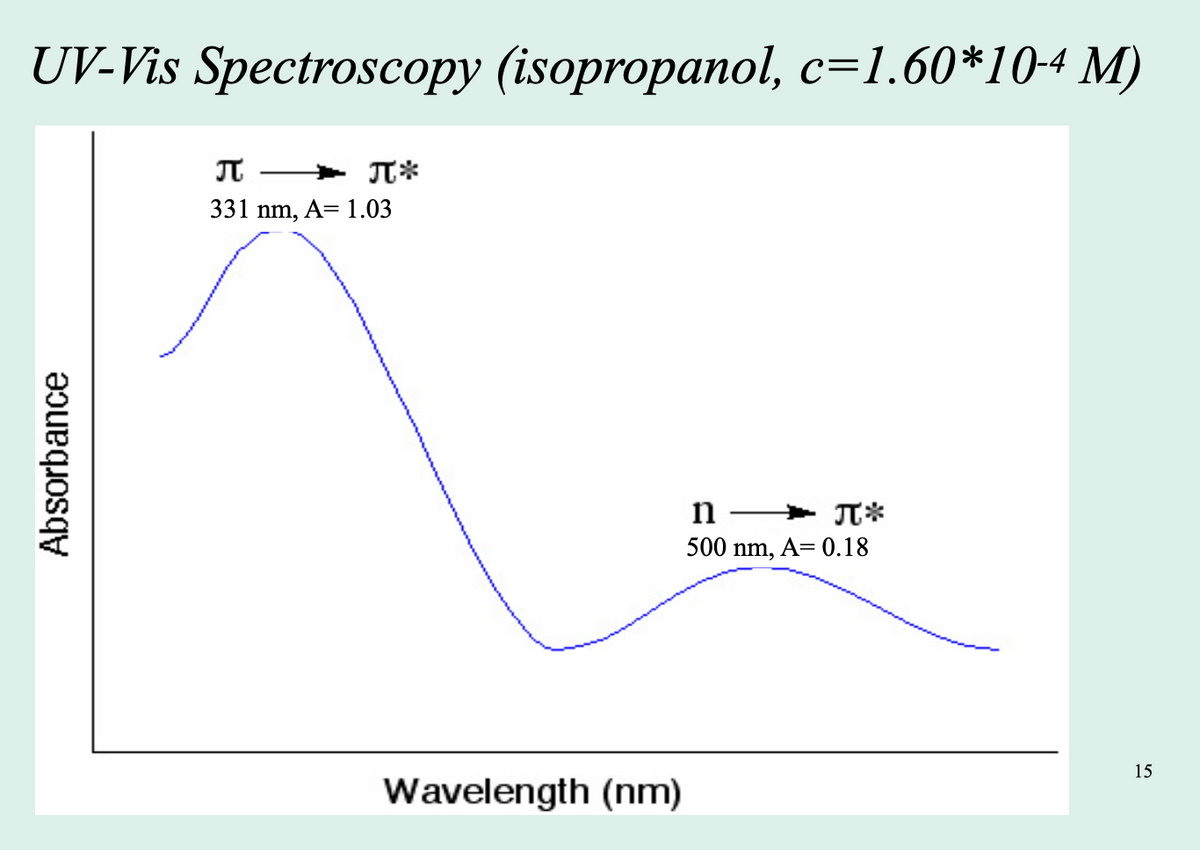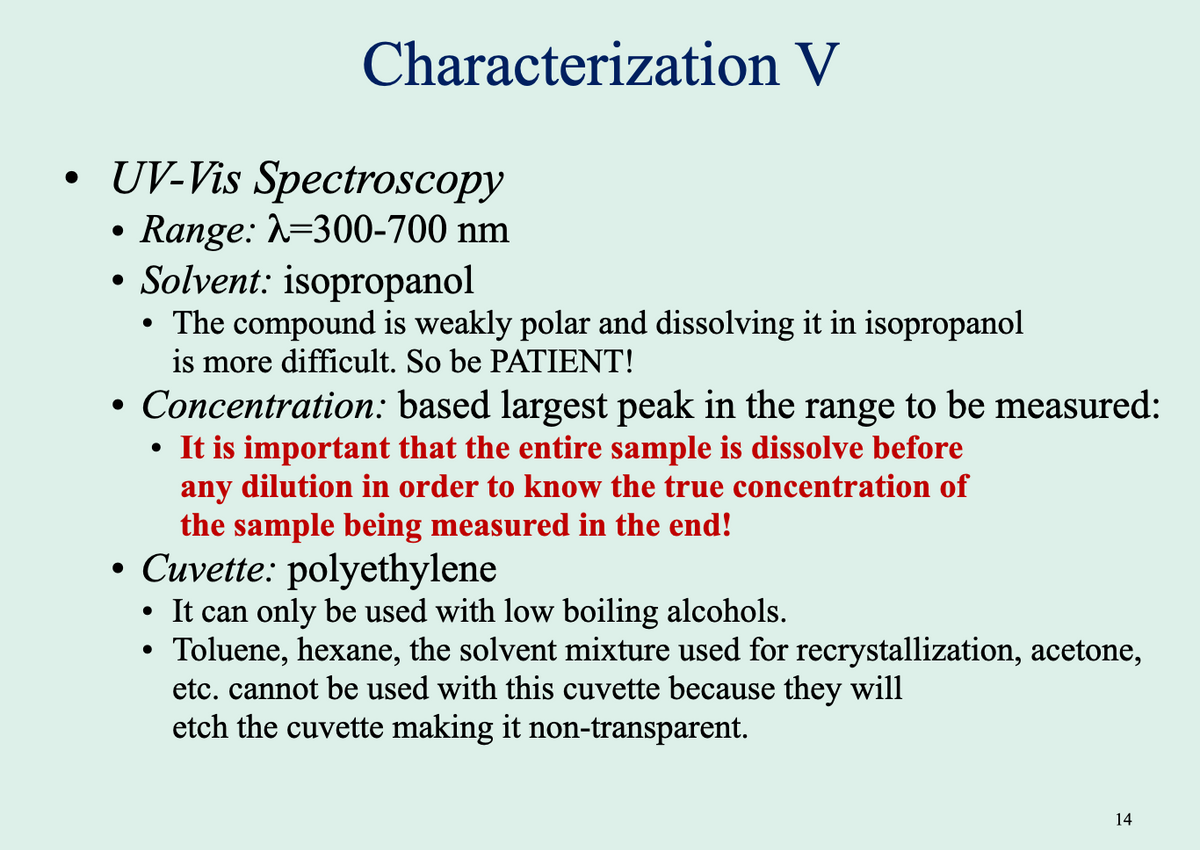Principles of Instrumental Analysis
7th Edition
ISBN:9781305577213
Author:Douglas A. Skoog, F. James Holler, Stanley R. Crouch
Publisher:Douglas A. Skoog, F. James Holler, Stanley R. Crouch
Chapter9: Atomic Absorption And Atomic Fluorescence Spectrometry
Section: Chapter Questions
Problem 9.2QAP
Related questions
Question
Attatched is UV-Vis Spectrum (Isopropanol, c= 1.65 * 10-4 M)
Include the UV-Vis data in a table with wavelength, absorbance. and molar extinction coefficient
|
Wavelength |
Absorbance |
Molar Extinction Coefficient |
|
300-700 nm |
|
|

Transcribed Image Text:UV-Vis Spectroscopy (isopropanol, c=1.60*104 M)
JT
JT*
331 nm, A= 1.03
JT*
500 nm, A= 0.18
n
15
Wavelength (nm)
Absorbance

Transcribed Image Text:Characterization V
• UV-Vis Spectroscopy
Range: =300-700 nm
Solvent: isopropanol
The compound is weakly polar and dissolving it in isopropanol
is more difficult. So be PATIENT!
• Concentration: based largest peak in the range to be measured:
It is important that the entire sample is dissolve before
any dilution in order to know the true concentration of
the sample being measured in the end!
• Cuvette: polyethylene
• It can only be used with low boiling alcohols.
Toluene, hexane, the solvent mixture used for recrystallization, acetone,
etc. cannot be used with this cuvette because they will
etch the cuvette making it non-transparent.
14
Expert Solution
This question has been solved!
Explore an expertly crafted, step-by-step solution for a thorough understanding of key concepts.
This is a popular solution!
Trending now
This is a popular solution!
Step by step
Solved in 2 steps

Knowledge Booster
Learn more about
Need a deep-dive on the concept behind this application? Look no further. Learn more about this topic, chemistry and related others by exploring similar questions and additional content below.Recommended textbooks for you

Principles of Instrumental Analysis
Chemistry
ISBN:
9781305577213
Author:
Douglas A. Skoog, F. James Holler, Stanley R. Crouch
Publisher:
Cengage Learning

Macroscale and Microscale Organic Experiments
Chemistry
ISBN:
9781305577190
Author:
Kenneth L. Williamson, Katherine M. Masters
Publisher:
Brooks Cole

Organic Chemistry
Chemistry
ISBN:
9781305580350
Author:
William H. Brown, Brent L. Iverson, Eric Anslyn, Christopher S. Foote
Publisher:
Cengage Learning

Principles of Instrumental Analysis
Chemistry
ISBN:
9781305577213
Author:
Douglas A. Skoog, F. James Holler, Stanley R. Crouch
Publisher:
Cengage Learning

Macroscale and Microscale Organic Experiments
Chemistry
ISBN:
9781305577190
Author:
Kenneth L. Williamson, Katherine M. Masters
Publisher:
Brooks Cole

Organic Chemistry
Chemistry
ISBN:
9781305580350
Author:
William H. Brown, Brent L. Iverson, Eric Anslyn, Christopher S. Foote
Publisher:
Cengage Learning